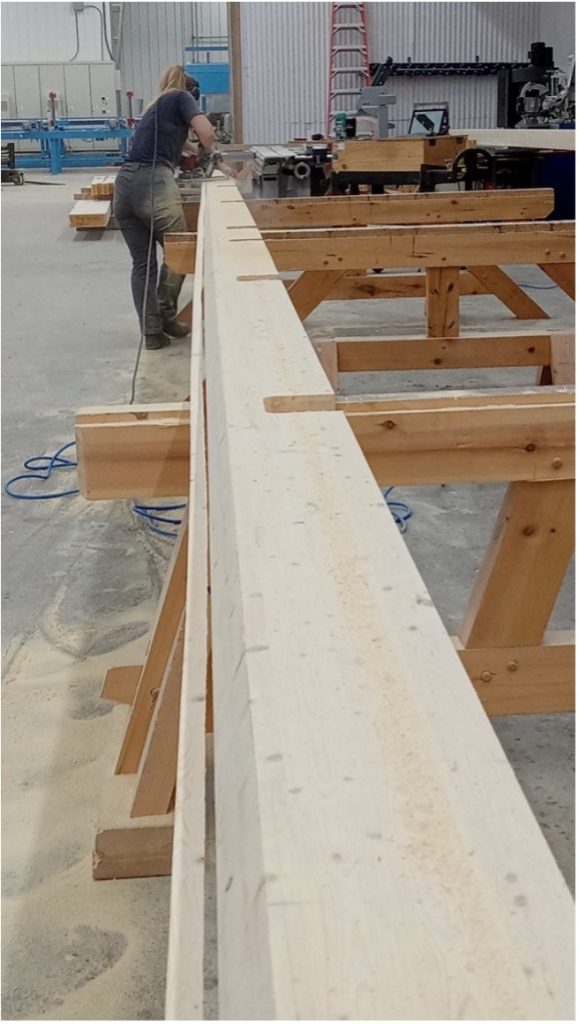Technology, People, Diversity, Respect
Cornerstone’s roots run deep in the soil of traditional timber framing. From the company’s inception in 1991, the founding Peters brothers maintained a steady focus on technical excellence and quality. Complementing their deep respect for traditional skills and methods, an interest in finding “better tools”, allowed them to see that new materials, digital design and state of the art equipment did not threaten the craft but freed it to be so much more.

By the time Cornerstone began its foray into mass timber construction in 2017 it was clear that the company was ready to automate much of its cutting. Under new owners, Tanya (Pete’s daughter) and husband Nevin Bachmeier purchased our first Hundegger K2, a used CNC machine that quickly proved its worth. Within three years the limitations of this machine were reached and a new, K2 Industry with Robot Drive was ordered, arriving in mid-2022.
The CNC technology in the latest generation of machines is especially impressive for the range of cutting tasks they can perform, their speed and exceptional accuracy. Imagine a 24” flangeless saw, a 5-axis universal mill, a slot cutting tool, a drilling unit, and a 6-axis robot with access to a rack of 24 specialized tools, all working from a 3D mass timber model that has been checked for compliance with the architect’s BIM design.





A common criticism of modern wood-working technology is that it replaces people and discourages those left behind from retaining craft skills. Our experience has shown this to be unfounded: we employ the same number of carpenters as we did before our first CNC arrived. Injuries and repetitive stresses are reduced, and the variety of creative work and skills being learned has only increased.
Modern timber framers are comfortable with computer modelling, they’re familiar with a wide variety of tools and techniques and are better able to see the whole project.




Cornerstone Timberframes will always seek out and embrace “better tools”. Our choices will be shaped by our people, a respect for our craft and a love of wood. The mass timber revolution is going to change our company, but only for the better.
11 Main Street – Unit D
Kleefeld, MB R0A 0V0 Canada
4737 County 101 #235
Minnetonka, MN 55345 USA